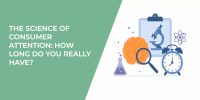Facebook Groups aren’t just places for casual chats anymore. For advertisers and marketers, they can be powerful tools to grab attention, build trust, and turn prospects into paying customers. Think of them as communities that work alongside your ads — offering conversation, trust, and connection in a way that ads alone can’t.
So how do you actually use Groups inside your funnel? Let’s walk through each stage — awareness, consideration, and conversion — and see how they fit.
Top of the Funnel (Awareness)
At the top of the funnel, people are only just discovering your brand. They may not know what you do, but they’re curious about the topic you cover. Your job here is to spark interest without going heavy on promotion.
How Groups Support Awareness:
-
Educational Communities: Start a public Group around your niche. For example, a fitness brand might run a Group about “Healthy Habits That Stick.”
-
Free Value-Add Content: Share quick tips, tutorials, or guides that make people feel they’re learning something new.
-
Engagement Hooks: Use polls, questions, or challenges to get people talking and sharing their opinions.
These moves position you as a source of value instead of just another business pushing ads. The more people trust your insights, the more likely they are to keep coming back. Curious how targeting shifts affect this stage? Take a look at Facebook Ads Targeting Updates: How to Adapt in 2025.
Middle of the Funnel (Consideration)
This is where people know the problem they want to solve — but they’re still deciding which solution is right. A Group can help you stand out by providing real answers and showing what makes you different.
How Groups Support Consideration:
-
Targeted Resources: Share stories, examples, or comparisons that highlight how your product solves common pain points.
-
Exclusive Learning: Run workshops or live Q&As for members. A software company, for example, could host a session on “3 Simple Automations to Save Hours Every Week.”
-
Authority Building: Show up in the comments, respond to questions, and be the expert people can count on.
This stage is all about trust. You’re not telling people to choose you — you’re showing them why you’re the better choice. If you want a structured playbook, check out Facebook Ads Funnel Strategy: From Audience Identification to Conversion.
Bottom of the Funnel (Conversion)
At this stage, people are almost ready to buy. They just need a little reassurance, proof, or an extra push. Your Group can give them that.
How Groups Support Conversion:
-
Customer-Only Groups: Create a private space for paying clients. The sense of exclusivity can push undecided prospects to finally commit.
-
Soft Offers: Share discounts, bonuses, or early access with Group members to reward their loyalty.
-
Social Proof: Encourage existing customers to post success stories, feedback, or before-and-after results.
When prospects see others like them getting results, they feel confident moving forward. Want to dig deeper into lead-focused strategies? Read Mastering Lead Generation in 2025: Top Tactics for Success.
Beyond the Funnel: Retention and Advocacy
The relationship doesn’t end with a sale. Groups are perfect for keeping customers engaged long-term and even turning them into advocates.
-
Community Support: Members help each other solve problems, which lightens the load on your support team.
-
Upsell Opportunities: Use the Group to introduce new features or upgrades to people who already trust you.
-
Advocacy and Word-of-Mouth: A thriving Group often inspires members to recommend your brand outside the community.
This is where your funnel grows into a cycle. Happy members share their experiences, which pulls in new leads. To make your Group stand out in this way, check out Get Your Facebook Group Noticed: Attract Members Who Actually Engage.
Tips for Making Groups Work Across the Funnel
-
Write clear rules so conversations stay valuable and on-topic.
-
Mix content formats — short posts, polls, videos, or even live streams.
-
Follow the 80/20 rule: 80% value-driven content, 20% promotion.
-
Track performance with links, sign-ups, or surveys to see how members move through the funnel.
These small steps keep your Group healthy and aligned with your bigger strategy. When you see it as a living community — not just a broadcast channel — the results are much stronger.
Final Thoughts
Facebook Groups can support every stage of your funnel — from sparking awareness to driving conversions and keeping customers loyal. When you use them with intention, they stop being side projects and start becoming assets that actually move your business forward.

